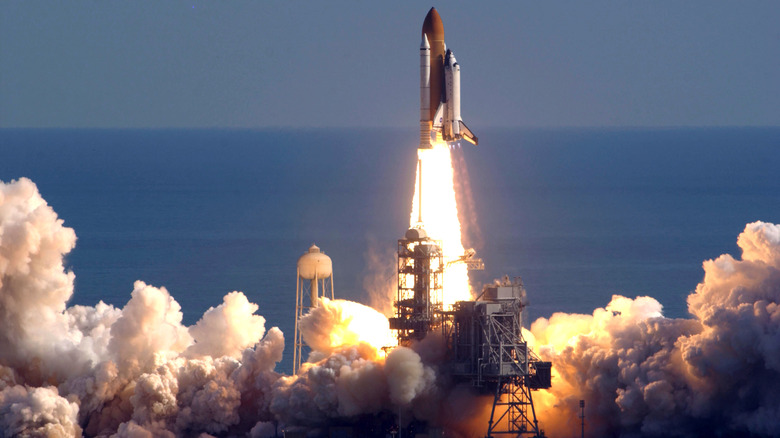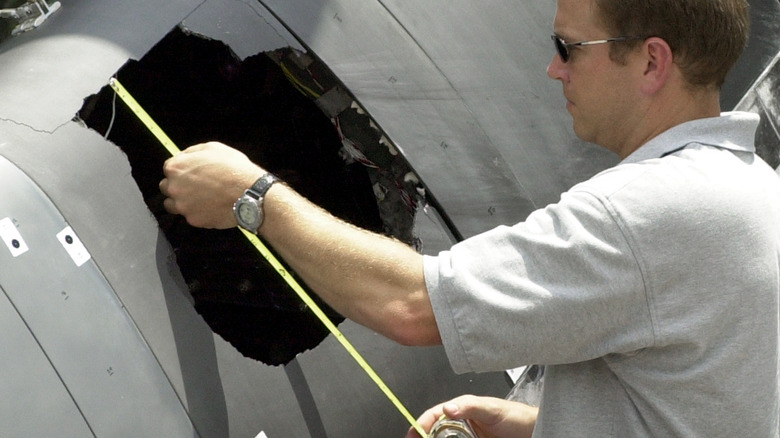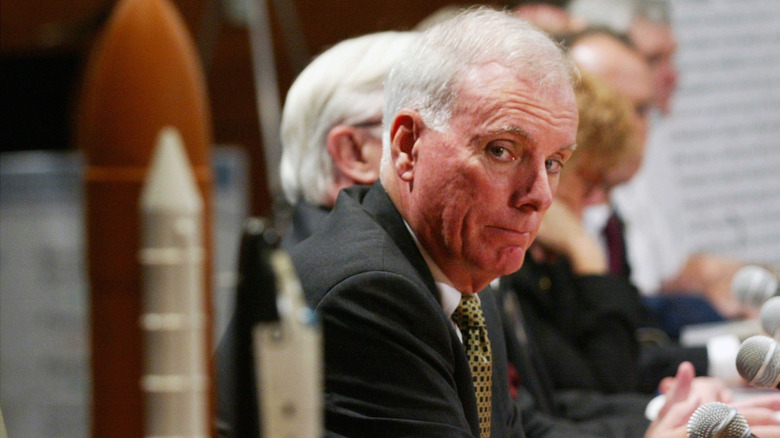What Caused The Space Shuttle Columbia Disaster?
It was the alpha of the U.S. space shuttle program. In 1981, the Columbia successfully completed its first mission after a two-day flight, demonstrating the safety of the remarkable and reusable new class of orbiter. Four more shuttles followed in its wake, but Columbia was never retired. It flew 27 missions over the next 20 years, running people and equipment to and from space.
On January 16, 2003, Columbia was prepped for another voyage, one that had been postponed for two years due to construction on the International Space Station. The microgravity experiments planned for the 17-day flight were considered a low priority by NASA, but the shuttle's crew of seven dutifully carried out their mission under the command of Rick D. Husband. Findings were reported from low Earth orbit with expressions of peace that were a regular feature of the space program. Down below, supervision of the 16-day flight was minimal.
But when Columbia began reentry on February 1, instruments in the left wing began to fail. Engineers and flight directors recalled that a piece of solid foam from the fuel tank had struck the left wing during launch. The impact damaged the thermal protection system of Columbia, and while it didn't affect the flight, it proved devastated during reentry at 17,000 miles per hour. Heat was able to penetrate the hydraulic systems of the shuttle. It began to disintegrate until it exploded over Texas. All seven of Columbia's crew were lost in the tragedy; worms involved in one of the experiments managed to survive.
Problems in management kept Columbia's danger from being recognized
The immediate, physical cause of the Columbia disaster was the foam collision with the left wing, a fact that was readily determined. Immediately after the shuttle's explosion, NASA began an investigatory protocol developed after the Challenger disaster of 1986. Unlike that incident, no independent commission was created; President George W. Bush left the investigation to a board of seven organized by NASA.
But a long chain of mistakes and institutional neglect led up to Columbia's fatal last flight. Two of the biggest issues were a creeping acceptance of risk and a managerial culture that overrode the concerns of those on the ground. To the former: by the time of Columbia's 2003 launch, pieces of foam breaking away during had regularly been observed on space shuttle missions. None resulted in serious damage, and it was assumed that any collision with the space shuttles wouldn't impair its function. Columbia's crew were informed about their damaged wing, but the risk was downplayed, based on these faulty assumptions.
Down at Mission Control, low-level engineers expressed concerns over the piece of foam that had struck the shuttle's left wing, but NASA management had dismissed the issue. Besides considering it low-risk, management assumed that the damage from the foam couldn't be addressed during Columbia's flight. But it was later determined that it would have been possible for the crew to repair the damage while still in orbit. Had they failed, Columbia could have stayed in orbit while the shuttle Atlantis undertook a rescue mission.
Government pressure helped make Columbia less safe
NASA's internal culture had its issues, to put it mildly, leading up to the Columbia disaster. But to some extent, its hands were tied. In announcing the findings of the investigation into Columbia's destruction, board chairman Harold W. Gehman Jr. told a congressional committee that pressure from both the White House and Congress had contributed to the institutional shortcomings at NASA (via NBC News). Ironically, Gehman had aligned the board more with Congress than with NASA and had been told by some congressional staff that there was a lack of trust in NASA on Capitol Hill (via The Atlantic).
Gehman, while citing management and cultural changes undertaken by NASA in the wake of Columbia's loss, named budgetary and scheduling pressures as taking time and money away from safety measures. Prioritizing construction on the International Space Station had not only delayed Columbia's mission but was implicated in safety neglect. But the mission itself may have been unnecessary. In The Atlantic, William Langewiesche accused Congress of imposing a low-priority scientific flight on NASA. The experiments done on the shuttle, he wrote, were interesting but hardly groundbreaking or essential. The mission represented an uninspired, mandated project.


